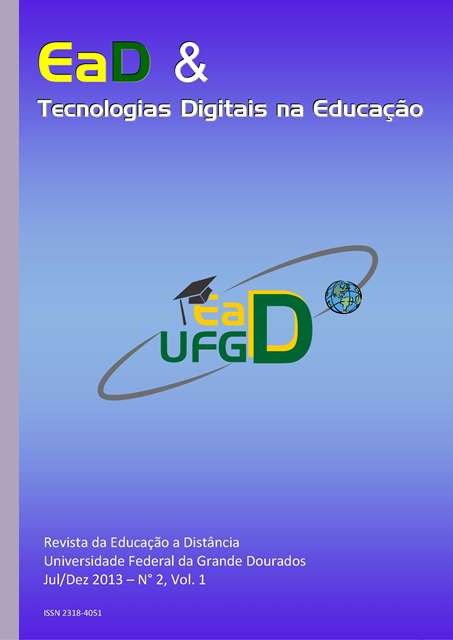Utilização dos recursos tecnológicos na formação de professores em cursos na área da Educação Especial: desafios e possibilidades
Keywords:
Technological Resources. Training of teachers. Special Education.Abstract
Nowadays it is recognized that the benefits and technologies have contributed much to education, but we must admit also that the mere fact of its technological resources in the classroom is not enough to ensure improvements in education. In this context this article aims to demystify the use of technology in a case study conducted with the teachers and professors ESA (Educational Support Specialist) who work with students with a special educational need at school Municipal Franklin Luiz Azambuja de Dourados/MS, the study's primary focus continued training with the use of technological resources in teacher training courses in special education, the objective it was decided to approach the media resources of the pedagogical as a source of research and exchange of experiences. Methodology was collaborative learning through a forum for in‐ teraction, research through the internet, films viewed in person meetings and depositions in the formation. From the results of observations and interviews with teachers, this research was structured. There was action of cooperation and involvement of all the school to carry out training to increase their knowledge, complementation, and deeper reflection on the practices of inclu‐ sive education. Build collective knowledge through the reading of information films, documentaries and interviews. We expanded our knowledge through lec‐ tures with professionals from different areas. We provide moments of exchang‐ es and experiences among educators in the face meetings and also through the E‐Platform ProInfo, enabling educators to reflect on the importance of using technologies for monitoring the student's school life (Portfolio). We exchanged experiences in assembling materials through technological resources (slides, films, photos) that show the form of inclusion proposed by each teacher during insertion of the school planning.Downloads
References
BELLONI, Maria Luiza. O que e Mídia‐educação. 2ª edição. Campinas, Autores Associados. 2005. 100 p.
BOOF, Leonardo. Virtudes para um mundo possível. Petrópolis: Vozes, 2005.
GADOTTI, Moacir. Qualidade na Educação: Uma Nova Abordagem, Editora e Livraria Instituto Paulo Freire; Caderno de Formação 5, São Paulo, 2010.
MORAN, José Manuel et al. As Novas Tecnologias e Mediação Pedagógicas. 6ª. ed. Campinas: Papirus, 2000.
MUSSIO, P. Introdução a informática – automação e trabalho. Editora Vozes. Petrópolis, 1987.
Política Nacional de Educação Especial e da Resolução nº4/2009,
PROINFO: Informática e formação de professores / Secretaria de Educação a Distância. Brasília: Ministério da Educação, Seed, 2000.
RATTNER, Henrique. Política de ciência e tecnologia no limiar do século. In: RATTNER, H.(Org.) Brasil no limiar do século XXI : Alternativas para a construção de uma sociedade sustentável. São Paulo: EDUSP, 2000.
Resolução CNE No. 02, de 11 de setembro de 2001.
Downloads
Published
How to Cite
Issue
Section
License
Autores que publicam nesta revista concordam com os seguintes termos:
a. Autores mantém os direitos autorais e concedem à revista o direito de primeira publicação, com o trabalho simultaneamente licenciado sob a Creative Commons Atribuição-NãoComercial-CompartilhaIgual 3.0 Brasil que permitindo o compartilhamento do trabalho com reconhecimento da autoria do trabalho e publicação inicial nesta revista.
b. Autores têm autorização para assumir contratos adicionais separadamente, para distribuição não-exclusiva da versão do trabalho publicada nesta revista (ex.: publicar em repositório institucional ou como capítulo de livro), com reconhecimento de autoria e publicação inicial nesta revista.
c. Autores têm permissão e são estimulados a publicar e distribuir seu trabalho online (ex.: em repositórios institucionais ou na sua página pessoal) a qualquer ponto antes ou durante o processo editorial, já que isso pode gerar alterações produtivas, bem como aumentar o impacto e a citação do trabalho publicado.


